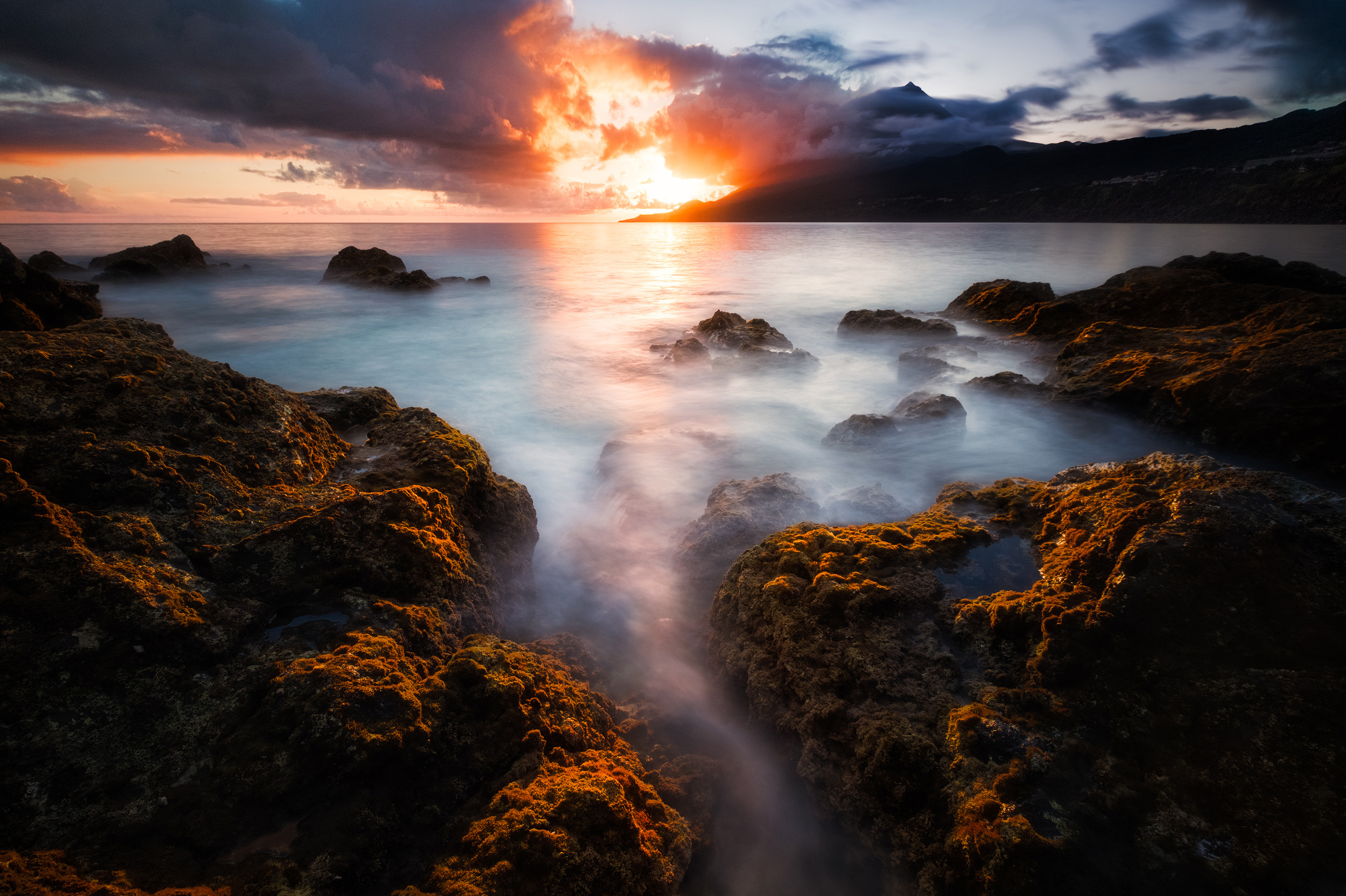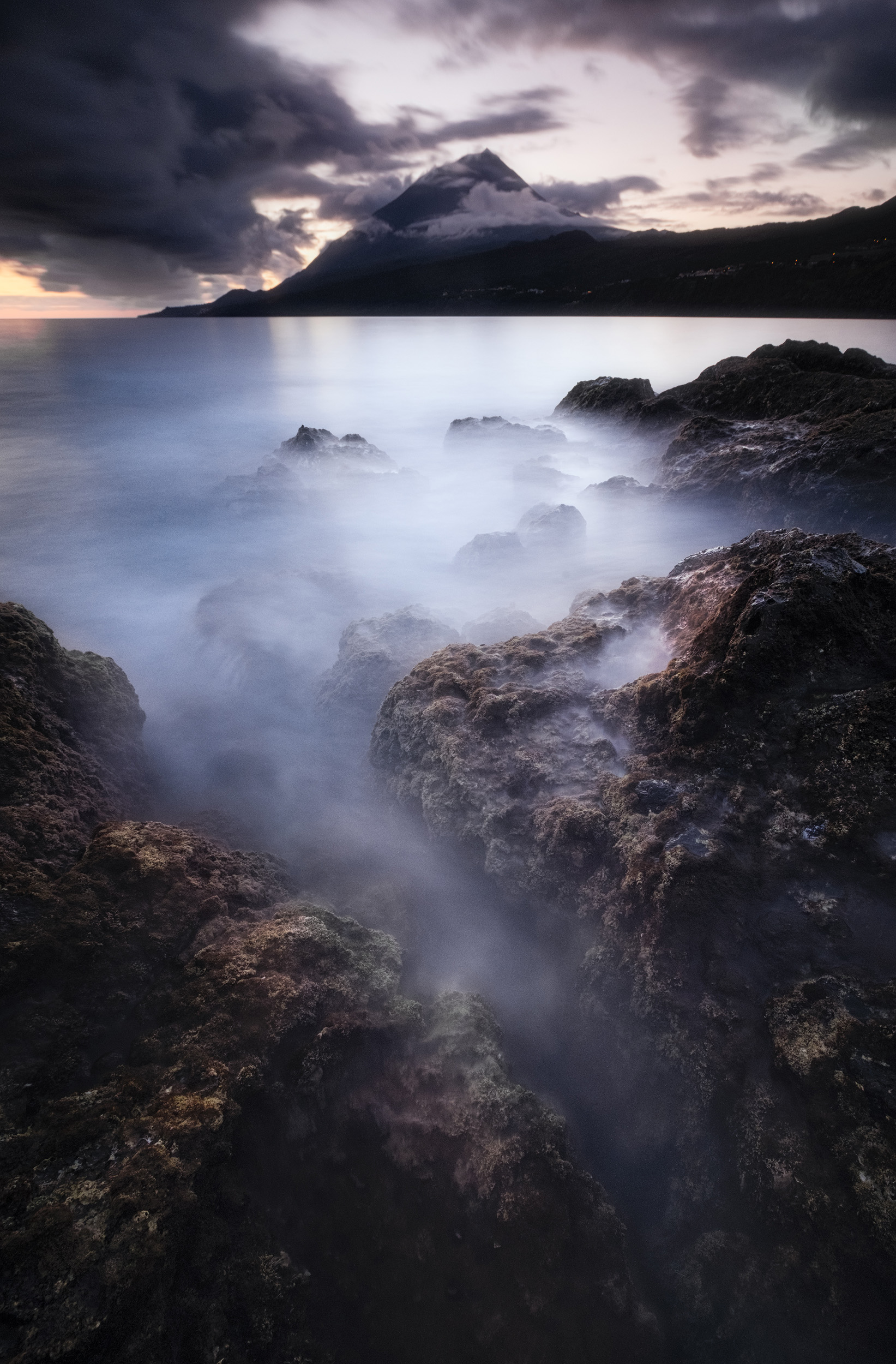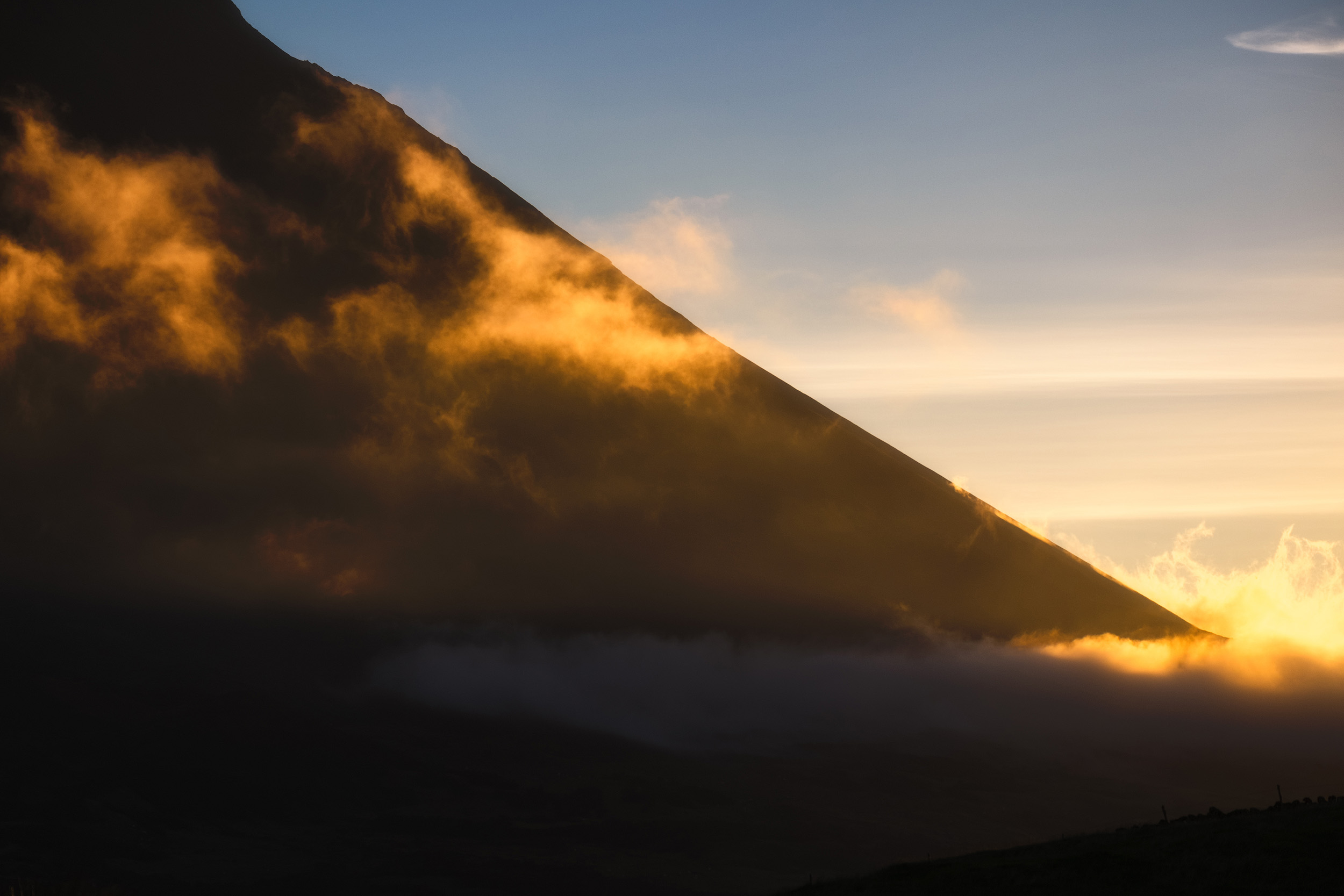AZORES PART 1: PICO
This year Teresa and I decided that we'd like to see more of Portugal so instead of booking an exotic trip to someone far away we've gone on short trips to different parts of Portugal, from Porto in the winter to Alentejo in the spring. For the summer we decided to spend 10 days travelling around some of the islands of the Açores, a place neither of us had ever visited and didn't really know much about. The Açores is an archipelago of nine volcanic islands pretty much in the middle of the Atlantic Ocean midway between Europe and the USA.
The first part was planning which islands to visit. São Miguel is the obvious one, but it's also the most touristed and best known. I spent some time researching the islands and it quickly became apparent that Flores, one of the western most islands, was the one I wanted to photograph most, and next to that is the tiny island of Corvo which also looked stunning. I also wanted to photography Pico, Portugal's highest mountain, which can also be viewed from the neighboring islands of Faial and Sao Jorge. Both of these islands looked lovely, but as there are direct flights to Faial from Lisbon it made sense to spend some time there. So our final plan saw us flying to Faial, picking up a rental car and then catching a ferry for the 30 minute trip to Pico.
Arriving by plane on the islands is stunning, we flew low across Terceira and Sao Jorge with the mountain of Pico to our left. As we made the final approach we were actually below the peak and then we could see the cliffs of Faial opposite the cabin windows. It's a wonderful place to land.
We picked up a rental car at the airport and then headed into town to catch the ferry. We were immediately struck by the beauty of the island and the views across the small patch of water to Pico, whose peak was wreathed in cloud.
The ferry is super modern and comfortable, and in no time we were heading south around the island to our accommodation. It really is a stunning place, the road winds around the south of the island with views across the ocean on one side and the mountain rising almost vertically to it's 2300 meter peak on the other. We found the cottage we were renting in the village of São Caetano, then after a rest (we'd been awake since 5am), headed to the village of Lajes in the south east of the island for sunset. Lajes is unique in that it's located on a headland that curves to the south away from the island and has one of the best placse to view the mountain of Pico from the island itself. The view to the west also means it's possible to photograph the peak at sunset across the water of the bay. I spent some time wandering around searching for a good location before settling down and waiting for the clouds, which were again obscuring the peak, to clear. They took their time, but finally, just around sunset I could make out the peak of the mountain and get some decent shots
The following day we explored the island to the east. We were amazed at the vegetation on the coastal road, it was so lush and green in the humid sub-tropical climate that it reminded us both of north east Brazil. Everywhere is deep verdant green, and many of the houses are built from black volcanic rock which makes the island feel completely unlike anywhere else in Portugal. Even the windmills are different.
We returned to the village of Lajes for lunch and spent an hour exploring the streets of this former whaling town. It's connection to whaling is visible everywhere, from the old wooden boats that were used to catch the whales, to the architecture, which occasionally resembles the buildings of New England due to the many whalers who came from there.
We then headed around the end of the island before turning up into the hills that run along its spine. The cloud was once again really low and as we climbed past 800 meters it became misty and rainy, and visibility completely disappeared. This was a pity because what we'd seen of the landscape in the interior highlands was amazing and in contrast to the almost tropical coastal road reminded me of the Isle of Skye with its rolling hillocks and dry stone walls.
We arrived at Lagoa da Capitao, a location I'd planned on shooting at sunset but it soon became apparent that the cloud wasn't gong to clear and I'd never get a glimpse of Pico. It was also raining hard, so regretfully we headed back down the mountain to the village where we were staying. We were planning to catch the 2pm ferry back to Faial the following day so in the morning we explored the coast around our little cottage and then headed back to the port at Madalena, stopping repeatedly as I wanted to photograph the vineyards that were protected from the winds by dry stone walls made from the black volcanic rock that is everywhere on this island.
When we got to Madalena we found that every car space on every ferry to Horta had already been booked and the only place left was on a ferry that left Sao Roque, on the north side of the island at 21h50. I was actually pretty happy as Sao Roque is only 30 minutes by car from Lagoa do Capitao, so I would have another attempt to shoot it at sunset. We headed up into the highlands again, this time without the low lying cloud, although as on the first day the peak was completely covered. As there was no mist we had could actually see the landscape better than the previous day and when we arrived at the Lagoa were happy to spend a couple of hours just laying in the grass enjoying the views.
I was growing concerned though that the cloud around the top of the mountain wasn't going to clear, but ass sunset drew closer I walked back to the spot I'd picked and set up my tripod more in hope than expectation. It was a pity as it was such a beautiful spot with the juniper trees and the lake, but without the mountain in the background it just didn't work. Then, around 10 minutes before sunset the clouds once again started to clear. At first I could just see a shoulder of the mountain, then I caught glimpses of the peak, then the whole mountain was visible as the incredibly thick cloud cleared in a matter of minutes. I spent ten minutes shooting the mountain as the light hit its peak with a big smile on my face. There's a rare exhilaration that perhaps only other photographers can understand when conditions come together after a long wait at a great location. After I'd shot the image wide angle I switched to a telephoto lens to do close ups of the mountain with the backlit clouds.
As it got dark we headed off down to the port to wait for the ferry. From here the crossing is longer than Madalena, but the hour long trip watching the lights of Pico and Sao Jorge slide past is really pleasant.




















